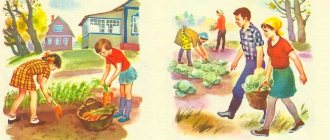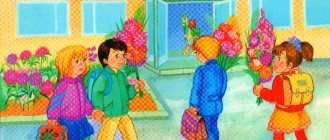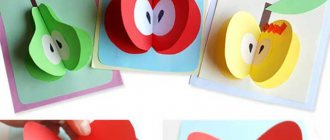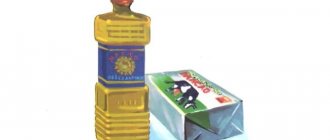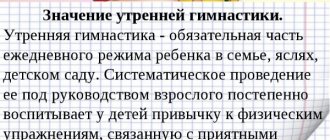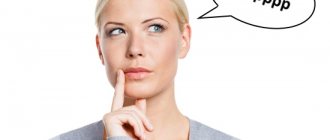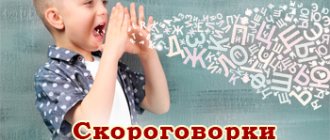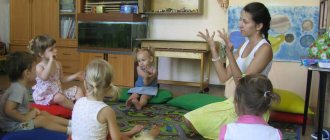The topic “Toys” must be used during speech therapy classes with preschoolers aged 2-7 years. Of course, the best pictures for children in kindergarten are Toys, which are specially selected for educational activities.
In the lexical material on this topic, several important “steps” can be identified, elements that must be mastered by preschoolers:
- The very generalizing concept of “toys”.
- Various names of items used for different types of games (story-based, action, etc.).
- General features and properties of toys, as well as their differences from other items.
- Ways to use certain toys.
- Features of their device.
- An idea of the material from which game items are made.
Here is a minimum list of words on the topic of toys for children that should be introduced into the active vocabulary of preschool children:
- Names of toys and their parts (nouns):
bear, bunny, dog, doll, car, ball, top, construction set, matryoshka, pyramid, head, torso, arm, leg, muzzle, paw, tail.
- Characteristics of items for games (adjectives):
* it is useful to teach them with children in pairs, comparing the properties of different toys.
Big - small, round - square, soft - hard, smooth - rough, fur - plastic, iron - wood, new - old.
- Various actions that can be performed with these objects (verbs):
Roll, carry, build, swing, dress, bathe, feed, wear, buy, lose, find, sew, play, collect.
Drawn pictures
For the formation of a passive vocabulary, pictures for children depicting various toys are of great importance. It is very good if they are presented in a wide variety, this allows you to offer the child many different speech exercises and activities.
For speech therapy games, it is much more convenient to use cards rather than real objects. Sorting and describing images not only contributes to children’s speech development, but also improves them:
- visual-figurative thinking;
- RAM;
- attention.
Of course, it is very difficult to draw such pictures yourself; it is better to find ready-made ones selected by professional speech therapists.
What role do picture conversations play in the development of a child’s speech?
Often opportunities to understand the world are limited by time, material capabilities, space, etc. We cannot take a child to the sea to show him the sea inhabitants and introduce him to the natural features of this natural area. But we can easily organize an interesting conversation with a child of any age in order to colorfully present to him the chosen topic without involving motor testing, based only on non-motor contemplation.
What are subject and plot pictures?
I think it’s not difficult to guess what their difference is. When working with a baby, both types are of great value.
An object picture is an isolated image of a separate object (object), without unnecessary elements and any distortions, exaggerations, understatements, etc. As a rule, sets of cards and entire books are produced depicting classifications that a preschool child should know. I mean images of food, clothing, fruits, vegetables, animals, insects, trees, furniture, etc.
The benefit of subject pictures is that they make it possible to enrich children’s vocabulary with nouns, which are precisely the basis of passive and active vocabulary. With their help, you can learn everyday verbs, some adjectives and even prepositions well. To develop thinking, in particular the ability to generalize objects and phenomena by characteristics, object pictures can contain groups of objects belonging to the same class, which can be called in one word (animals, transport, professions, seasons, etc.). These pictures help enrich the child’s personal knowledge and expand the scope of direct observation.
It has been proven that the sooner the mother begins to show the baby object pictures, the better he will learn to concentrate, analyze the general appearance of the object (examine individual parts) and then synthesize its image as a whole, imagine and identify familiar or similar objects, and a little later supplement them with new ones elements and fantasize. The fact is that didactic material with pictures that answer the questions who? What? what is he doing? which one? represent for us a huge playing field of activity with inexhaustible resources!
Many mothers of children aged 1 to 3 years know how difficult it is to stay at home with their child in bad weather or during a prolonged illness. And viewing subject pictures with conversations on them can save you from the boredom and monotony of such everyday life)))
Plot pictures are images of a whole situation, some events containing several characters or sequences of actions. They can express different characters, depict different settings, details, interests, etc. Conversations based on subject pictures help at a later stage, when subject pictures have been mastered. They form the child’s ideas about various everyday, social, and problem situations, provide a basis for understanding people’s behavior, and develop fantasy, logic, imagination, thinking, and correct oral speech.
Sentences gradually become detailed and grammatically correct. Based on a plot picture, you can build a sentence, a short story or a whole story, answer questions in detail, reconstruct the sequence of events using a series of pictures - it all depends on the child’s level of preparation and the use of teaching tools (leading/clarifying/affirming question, clarifying hint, “living in” the picture etc.).
As a rule, object pictures are used in the first or second year of life, and closer to 2-3 years the child is already ready to perceive simple story lines.
Requirements for subject and plot pictures for preschoolers
Visual aids for young children must meet a number of requirements. To benefit from talking through pictures and looking at them, we cannot take any pictures that come our way.
- The picture must be graphically and logically literate. The presence of semantic or any other distortions, stylizations, embellishments, simplifications and other artistic techniques is not allowed. She conveys reality exactly.
- Consider the baby’s capabilities at this age stage. He must be ready to perceive the image. Ideally, we give at the initial stage what the baby can see, touch, feel - no abstractions or spatial concepts.
- The image should have clear outlines, preferably black. The silhouette is without distortion.
- Complex colors and their shades are not welcome. Take pictures with simple colors that the visual analyzer is ready to assimilate at this stage (red, blue, green, yellow, orange, pink, etc.).
- Don't take an image that is overloaded with additional details. If this is an apple, then it should be drawn on a plain background (preferably white), there should be nothing in the background!
- Any picture must be accompanied by simple text consisting of simple narrative sentences. The words used in them certainly correspond to the capabilities of the auditory analyzer of a child of this age. In essence, a story about an object serves as a standard, a kind of template for an ideal story about the object in question.
- The show continues exactly until the child loses interest in the process.
- We do not overload one lesson with a large number of pictures. This causes confusion in the child’s head, as it overloads the auditory, visual and other analyzers involved.
- Before verbalizing pictures, always let children familiarize themselves with their content. Let contemplation be the first step in getting to know any new image.
The same picture can be auxiliary material for different types of work to develop the child’s cognitive interest and speech. Just supplement the already acquired visual image with new emotions, use it in unexpected situations, do exercises to develop different skills and abilities.
Coloring pages
To conduct classes on the topic “Toys” it is also very useful to use thematic coloring books. They help the child not only learn and remember all kinds of names of objects for games, but also practice using a large number of descriptive adjectives (in descriptions of various colors and materials). A correctly selected coloring book is a real helper for speech therapists and parents!
Games
With “Toys” pictures you can conduct many simple and effective speech therapy activities aimed at developing the speech of preschool children. Here are some examples of such games:
Name the pictures
The development of children's speech is facilitated by naming the various toys depicted on the cards. It is important to choose the most realistic drawings, this helps the child quickly recognize this or that object. Such pictures of toys for children must certainly be bright and attractive in appearance.
What's missing here?
The popular logic game “Odd Four” can also be used in speech therapy classes. During it, children are offered four images, three of which can be called in one word (“toys”), and one cannot; this card is selected from other categories (vegetables, plants, animals, transport, etc.). This game helps to enrich and activate passive vocabulary, and also perfectly trains the attention and thinking of preschoolers.
Which? Which? Which?
Show your child one picture at a time from the set of “Toys” cards and ask him to list the properties of the object depicted on it. For example: a doll - new, elegant, plastic, curly, blue-eyed, big, new, etc. If you have pictures from the Toys for Children series on a transparent background, then it is better to use them in this game.
Call me kindly
This game is great for developing the skill of using diminutive suffixes on nouns. An adult shows children 4 years and older toys (in pictures or real ones) and asks them to name them affectionately. Examples:
- doll - doll; - ball - ball; - bear - bear; - elephant - elephant; - hare - bunny; - car - machine; - jump rope - jump rope.
For children of senior preschool age 6-7 years old, you can conduct a complicated lesson: ask them to remember the names of toys that are used only in an “affectionate” form. (top, pyramid) or do not have it at all (spinning top, hoop, train, clown, etc.).
One-many
Teach your child not only to name toys one by one, but also to find one or another of them in a group of similar/identical images. Example:
ball - ball doll - dolls cube - cubes ball - balls.
Detectives
Another simple and exciting game that will help your child quickly learn the names of a large number of toys. As visual material for it you can use:
- Pictures;
- real objects for games;
- video materials.
First you need to show four different pictures with images of toys, and then hide (close) one of the cards. The baby must remember and name what is missing.
Guess what color
Invite your child to name the color of the toy you show him. You need to start with basic colors, then you can add more complex options, with shades (bright red, scarlet, dark green, light pink). During this game you can also reinforce the concepts
- bright; – multi-colored; - transparent; – multi-color.
Whose toy is this?
This exercise allows you to teach a preschool child how to coordinate nouns (names of toys) with personal pronouns. You show your child a picture and ask: “Whose is this?” Possible answers:
my (dog, spinning top, pyramid) my (ball, elephant, bunny, clown) my (lotto, dominoes) my (cubes, balls)
Who's doing what?
This game allows you to train the skill of agreeing a noun with a verb. Show your child pictures of toys (singular and plural, pairs) one at a time and ask the question: “What is this? What is he doing? Possible answers:
the doll is sleeping - the dolls are sleeping the parsley is sitting - the parsleys are sitting the bunny fell from the shelf - the bunnies fell from the shelf the top is spinning - the tops are spinning the ball rolled away - the balls rolled away the car broke down - the cars broke down the bear is sleeping - the bears are sleeping
The large picture “Toys for Children” can be used for a similar activity with several kids at once, in a group or subgroup.
What toy?
This fun game helps children learn the rules of noun-adjective agreement quickly and easily. Ask your child to come up with as many characteristics as possible for the toy whose image is in your hands. It is best to play this game among several children or in an adult-child pair. Try to avoid repeating adjectives; it is important to name as many different words as possible.
Example:
The horse is wooden, new, beloved, comfortable, hard, smooth, brown. Elephant - purple, soft, big, sad, big-eared.
Shop
The usual game of “shopping” can be slightly modified and effectively used to develop the speech of children in the senior and preparatory groups of kindergarten. Invite the children to choose a card from the “Toys” set, i.e., “make a purchase.” Then the boy or girl goes to the window and chooses a “purchase”. The child must accompany his actions with a correctly constructed complete sentence, in which he must name the selected object and several of its characteristics (color, material, size and other features). This exercise helps enrich children's active vocabulary and develop their imagination.
Example:
1. I want to buy a big yellow ball. 2. I want to buy a bright red cube. 3. I want to buy an elegant little doll. 4. I want to buy a set of wooden blocks in a box.
The picture Toys for Children on a transparent background is very suitable for this game, although ordinary cardboard cards can also be used.
MAGAZINE Preschooler.RF
Speech development in preschoolers through picture conversationsEducator: Arkhipova Nafisa Khamitovna State budgetary preschool educational institution kindergarten No. 77 Combined type of Primorsky district St. Petersburg 2022
“Teach a child some five words unknown to him, he will suffer for a long time and in vain, but tie twenty of these
words with pictures, and he will learn them on the fly” K.D. Ushinsky
Speech development is a very important section in all educational programs. The speech development program is developed taking into account the target psychological and pedagogical guidelines for the basic content of preschool education. The development of spoken language is central to preparing a child for school.
Working on this task, the teacher thinks through the organization of the children’s speech environment through indirect ways of understanding the world. Reading books, looking at pictures, objects, observing objects of nature contribute to the most optimal communication between children and adults and peers, during which they learn to ask and answer questions, report their impressions, and learn lessons in the culture of communication. All types of speech activity are the subject of everyday attention and targeted training in kindergarten, namely:
- Everyday communication
- Direct educational activities on speech development
Much attention is paid to everyday communication, during which the teacher tries to give the child an example of correct speech, the ability to listen and express his thoughts
Topics of direct educational activities are planned by the teacher in accordance with the kindergarten program and taking into account the level of development of the entire group of children as a whole, as well as the individual characteristics of each child individually.
An important place in the speech development of children belongs to conversation based on a picture - both subject and plot, familiar or unfamiliar.
Children have difficulty composing a story based on pictures.
When introducing children to pictures, it is necessary to know children's literature, be able to write a fascinating story, know the algorithm for describing a picture, and be able to pose questions correctly, logically and in a fun way for the child. To study the characteristics of the state of coherent monologue speech, a teaching method for composing a story from pictures is used.
Teachers use different types of work with pictures:
- Consideration
- Conversations
- Compiling stories from pictures
In the implementation of program tasks for the speech development of children, conversation based on a picture contributes to:
- strengthening children's skills in conducting individual and group conversations
- replenishment, clarification and activation of vocabulary
- development of memory and attention
- improvement of verbal and logical thinking
- formation of the phonetic side of speech
- acquisition of the phonetic side of speech
- acquiring the ability to establish relationships between objects
- developing an understanding of the meaning and content of the picture
- formation of explanatory and evidentiary speech
- concretization of knowledge about surrounding objects
- strengthening skills to navigate in space, etc.
During a conversation based on a picture, the teacher can systematically monitor the production of sounds and the grammatical correctness of children’s speech, the skills of sound analysis and synthesis. The use of dialogues based on pictures contributes not only to the speech, but also to the social and emotional development of the child, the formation of his motivational sphere. Any method of speech development requires the mandatory use of visual and didactic material. Sets of pictures depicting procedures and processes familiar to the child (getting up, washing, cleaning, dressing) will be an excellent help for mastering verbs, adverbs, participles and gerunds. Ask the children to describe what they see in these pictures. A younger child will most likely answer in monosyllables, using only verbs. An older child will construct more complex sentences, introducing parts of speech such as adverbs and adjectives. This will help them describe what they see in the picture in more detail.
During the initial examination of the picture, the teacher directs his attention to identifying the main objects, their properties, signs, and establishing connections between the depicted objects. When the picture is reused, a developmental conversation is held, which expands the possibilities of verbal communication between the child and the adult. This is a question-and-answer system of conversation, as a result of which the child develops the ability to listen to his interlocutor, speak out, and lead a discussion. The goal of developing children's dialogical speech during developmental conversations is dominant.
A creative approach to this type of verbal communication involves the use of different techniques:
- intentional errors in the teacher’s statement about the depicted
- statements by an adult directing the child to an evidence-based answer
- comparison of objects shown in the picture
- inclusion of different forms of the same word in speech.
The content of the pictures often pushes the teacher to include small folklore forms (proverbs, sayings, riddles, poems) in the conversation. When talking with a child using a picture, his attention can be directed to searching for words that include a given sound. When preparing for a lesson, the teacher thinks through not only the amount of new information, new terms and concepts, but also educational didactic materials with the help of which children could repeat and comprehend the knowledge they have acquired. Reflection on acquired knowledge should be carried out both during independent activities and throughout the day. Four types of reflection can be distinguished (from the Latin reflexio - turning back)
- Creative (children learn to fantasize and compose)
- Event-based (children learn to analyze and convey their attitude to current events)
- Personal (the goal is to promote self-knowledge of your spiritual world)
- Conceptual (the teacher must promote a meaningful understanding and perception of a person’s spiritual reality)
A distinctive feature of reflection is that it harmoniously combines the informational, cognitive and emotional aspects, as well as the development of different types of speech activity. Conversations based on pictures include:
1. Development of sound culture of speech.
- Practicing the correct pronunciation of the sounds of your native language, words and phrases.
- Development of phonemic awareness (selection of words for a given sound, familiarity with rhyme)
- Development of articulation (onomatopoeia, articulatory gymnastics)
- Training in intonation expressiveness of speech (pronunciation of words and sounds in a certain key)
2. Vocabulary work:
- Introduction to general words (furniture, dishes, fruits, vegetables, transport, animals, etc.)
- Acquaintance with the professions of adults (cook, doctor, salesman, etc. - depending on the level of initial knowledge of children
- Getting to know synonyms and antonyms
Synonyms - similar lexical meaning, different sound; (walk, rush, plod, trudge)
Antonyms - opposite lexical meaning, different sound; (came - left, good - evil)
- Compiling descriptive stories from pictures about objects, animals, etc. (eg: Name of a pet, description of its appearance, what to feed it, what benefits it brings, why I love it)
- To consolidate coherent speech, compiling stories based on a picture from a series of plot paintings
- Introduction to the basics of etiquette (welcoming guests, table manners, good manners)
3. Grammatical structure of speech:
- Introduction to Conversation
- Learning to answer questions and ask them independently
- Familiarity with prepositions and the ability to use them correctly in speech
- Word agreement in a sentence
4. Fiction:
- Getting to know the works of Russian folklore
- Learning poems, proverbs, sayings
- Compiling and solving riddles
- Acquaintance with classic works of children's literature (S. Marshak, A. S. Pushkin, K Chukovsky, A. Barto, etc.)
- Dramatization and staging of works
The role of the teacher is to create situations of active speaking, communication, and mastering speech patterns. Considering the need to prepare a child for school, special attention should be paid to the development of phonemic hearing and correct sound pronunciation.
Parents of growing preschoolers should understand that no modern method of speech development can replace the benefits of live human communication. After all, it is everyday communication at home, within the walls of a preschool educational institution or development circles that is the key to the timely formation of speech skills.
Literature:
- Speech development. Thematic planning of classes V.Yu. Dyachenko Volgograd 2007
- Speech development of children 3-5 years old O.S. Ushakova Moscow 2011
- Notes of integrated classes by A.V. Aji Voronezh 2006
| Next > |
